Login
Registration enables users to use special features of this website, such as past
order histories, retained contact details for faster checkout, review submissions, and special promotions.
order histories, retained contact details for faster checkout, review submissions, and special promotions.
Forgot password?
Registration enables users to use special features of this website, such as past
order histories, retained contact details for faster checkout, review submissions, and special promotions.
order histories, retained contact details for faster checkout, review submissions, and special promotions.
Quick Order
Products
Antibodies
ELISA and Assay Kits
Research Areas
Infectious Disease
Resources
Purchasing
Reference Material
Contact Us
Location
Corporate Headquarters
Vector Laboratories, Inc.
6737 Mowry Ave
Newark, CA 94560
United States
Telephone Numbers
Customer Service: (800) 227-6666 / (650) 697-3600
Contact Us
Additional Contact Details
Login
Registration enables users to use special features of this website, such as past
order histories, retained contact details for faster checkout, review submissions, and special promotions.
order histories, retained contact details for faster checkout, review submissions, and special promotions.
Forgot password?
Registration enables users to use special features of this website, such as past
order histories, retained contact details for faster checkout, review submissions, and special promotions.
order histories, retained contact details for faster checkout, review submissions, and special promotions.
Quick Order
PathPlusTM ACE2 / ACE-2 Antibodies
Angiotensin-Converting Enzyme 2 (ACE2) is a transmembrane protein found in the lungs, intestines, heart, kidney, liver and arteries that plays a central role in vascular, renal, and myocardial physiology. The normal function of ACE2 is to convert the inactive vasoconstrictor angiotensin I (AngI) to Ang1-9 and the active form AngII to Ang1-7. It is involved in controlling vascular function including blood pressure, and absence of ACE2 expression in ace2-/ace2- mice leads to severely reduced cardiac contractility, indicating its importance in regulating heart function. ACE2 is also the primary attachment receptor for HCoV-N63, SARS-CoV and SARS-CoV-2. The S1 portion of the coronavirus spike protein attaches to ACE2 presented on the host cell surface. The SARS-CoV-2 virus targets pneumocytes and macrophages expressing ACE2 in the lung, and it is believed to infect ACE2-positive cells in other tissues including the gastrointestinal tract and potentially the liver (in cholangiocytes).
Hoffmann et al., 2020, Cell. 181, 1–10. April 16, 2020, DOI: 10.1016/j.cell.2020.02.052; Zhou, P et al. Nature.579, 270–273 (2020). DOI: 10.1038/s41586-020-2012-7; Xiaoqiang Chai et al. bioRxiv 2020.02.03.931766, DOI: 10.1101/2020.02.03.931766; Tikellis, Chris, and M C Thomas. Int J Pep. vol. 2012 (2012): 256294. doi:10.1155/2012/256294; Wrap et al. Science, 13 Mar 2020:Vol. 367, Issue 6483, pp. 1260-1263. DOI: 10.1126/science.abb2507;
5 PathPlusTM Antibodies
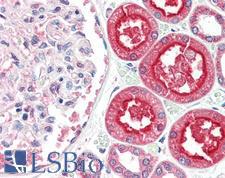
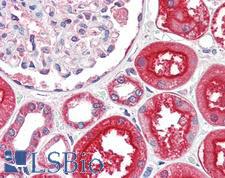
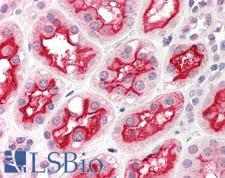
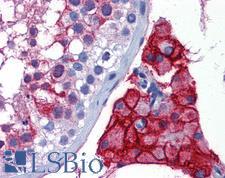
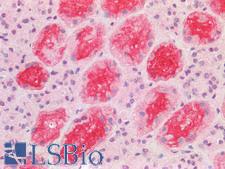
☰ Filters
Products
Antibodies
(5)
Type
Primary
(5)
Target
ACE2 / ACE-2
(5)
Reactivity
Human
(4)
Mouse
(1)
Rat
(1)
Application
IHC
(2)
IHC-P
(5)
WB
(5)
ELISA
(4)
IF
(3)
Host
rabbit
(5)
Product Group
Antibodies to Coronavirus-Associated Targets
(4)
Coronavirus Antibodies Proteins cDNAs
(4)
IHCPlus
(1)
PathPlus Other
(5)
Isotype
IgG
(3)
Clonality
polyclonal pc
(5)
Format
Unconjugated
(5)
Epitope
aa684-733
(1)
Publications
No
(4)
Yes
(1)

ACE2 / ACE-2 Rabbit anti-Human Polyclonal Antibody
Human
ELISA, IF, IHC-P, WB
Unconjugated
0.05 mg/$545

ACE2 / ACE-2 Rabbit anti-Human Polyclonal Antibody
Human
ELISA, IF, IHC, IHC-P, WB
Unconjugated
0.05 mg/$375

ACE2 / ACE-2 Rabbit anti-Human Polyclonal Antibody
Mouse, Human
ELISA, IF, IHC-P, WB
Unconjugated
0.05 mg/$545

ACE2 / ACE-2 Rabbit anti-Human Polyclonal (aa684-733) Antibody
Rat, Human
IHC, IHC-P, WB
Unconjugated
50 µl/$460

Fast Shipping
ACE2 / ACE-2 Rabbit anti-Human Polyclonal Antibody
ELISA, IHC-P, WB
Unconjugated
50 µg/$395
Viewing 1-5
of 5
product results











